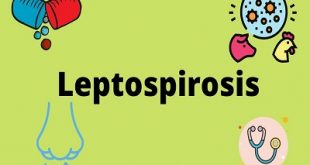Definition
Botulism is a rare but serious paralytic illness caused by a nerve toxin that is produced by the bacterium Clostridium botulinum and sometimes by strains of Clostridium butyricum and Clostridium baratii. Botulism is caused by botulinum toxin, a potent neurotoxin produced by Clostridium botulinum, a few strains of C. baratii and C. butyricum, and the recently reclassified species C. argentinense (formerly known as the type G toxin producing strains of C. botulinum).
What kind of germ is Clostridium botulinum?
Clostridium botulinum is the name of a group of bacteria commonly found in soil. These rod-shaped organisms grow best in low oxygen conditions. The bacteria form spores which allow them to survive in a dormant state until exposed to conditions that can support their growth. There are seven types of botulism toxin designated by the letters A through G; only types A, B, E and F cause illness in humans.
Scanning electron micrography of C. botulinum
Types of botulism
There are five main kinds of this disease:
Food borne botulism
It can happen by eating foods that have been contaminated with botulinum toxin. Common sources of food borne botulism are homemade foods that have been improperly canned, preserved, or fermented. Though uncommon, store-bought foods also can be contaminated with botulinum toxin.
A common cause of this poisoning is improperly preserved home-processed foods with low acid content, such as:
- Green beans
- Beets
- Corn
Less likely sources include fish products and other commercially processed foods.
Wound botulism
Wound botulism can happen if the spores of the bacteria get into a wound and make a toxin. People who inject drugs have a greater chance of getting wound botulism. It has also occurred in people after a traumatic injury, such as a motorcycle accident, or surgery.
Infant botulism
Infant botulism is caused by consuming the spores of the botulinum bacteria, which then grow in the intestines and release toxin. A number of such cases have been associated with eating honey contaminated with C. botulinum spores
Main cause of infant botulism is honey bee sipper
Adult intestinal toxemia (also known as adult intestinal toxemia) botulism is a very rare kind of botulism that can happen if the spores of the bacteria get into an adult’s intestines, grow, and produce the toxin (similar to infant botulism). Although we don’t know why people get this kind of botulism, people who have serious health conditions that affect the gut may be more likely to get sick.
Iatrogenic botulism can happen if too much botulinum toxin is injected for cosmetic reasons, such as for wrinkles, or medical reasons, such as for migraine headaches.
Incubation Period
- Food borne Botulism: Neurological symptoms usually appear within12-36 hours of ingesting contaminated food, with a range from six hours to eight days after ingestion.
- Wound Botulism: The incubation period is four to 14 days from the time of injury until the onset of symptoms.
- Infant Botulism: The incubation period is estimated to be three to 30 days after exposure to spore-forming organisms.
- Inhalation Botulism: The incubation period is thought to range from 12-80 hours after exposure.
Botulism – Mechanism of Action
Botulinum toxin acts by binding presynaptically to high-affinity recognition sites on the cholinergic nerve terminals and decreasing the release of acetylcholine (ACH), causing a neuromuscular blocking effect. This mechanism laid the foundation for the development of the toxin as a therapeutic tool.
Recovery occurs through proximal axonal sprouting and muscle re-innervation by formation of a new neuromuscular junction.
History
Botulism is an often-fatal disease of the nervous system of humans and other mammals that was first recorded in Europe in 1735 and that was suspected of being associated with a German sausage. It was named after the Latin word for sausage, ”botulus.”
In 1793 the German physician, Justinius Kerner (1786–1862), deduced that a substance in spoiled sausages, which he called wurstgift (German for sausage poison), caused botulism. The toxin’s origin and identity remained vague until Emile van Ermengem (1851–1932), a Belgian professor, isolated Clostridium botulinum in 1895 and identified it as the source of food poisoning.
Several nations produced this toxin in the World War II as a potential bacteriological weapon, and they were said to have been test sprayed over a section of Canadian wilderness (reportedly killing all animals within six hours), but they were never used in combat.
Epidemiology
Globally, it is fairly rare. In the United States, for example, an average of 145 cases are reported each year. Of these, roughly 65% are infant botulism, 20% are wound botulism, and 15% are food borne. Infant botulism is predominantly sporadic and not associated with epidemics, but great geographic variability exists. From 1974 to 1996, for example, 47% of all infant botulism cases reported in the U.S. occurred in California.
Between 1990 and 2000, the Centers for Disease Control and Prevention reported 263 individual food borne cases from 160 botulism events in the United States with a case-fatality rate of 4%. Thirty-nine percent (103 cases and 58 events) occurred in Alaska, all of which were attributable to traditional Alaska aboriginal foods. In the lower 49 states, home-canned food was implicated in 70 (91%) events with canned asparagus being the most numerous cause. Two restaurant-associated outbreaks affected 25 persons. The median number of cases per year was 23 (range 17–43), the median number of events per year was 14 (range 9–24). The highest incidence rates occurred in Alaska, Idaho, Washington, and Oregon. All other states had an incidence rate of 1 case per ten million people or less.
The number of cases of food borne and infant botulism has changed little in recent years, but wound botulism has increased because of the use of black tar heroin, especially in California.
Causes
It is rare, but there are still cases every year.
There are four ways to get botulism:
- Food borne botulism occurs when food contaminated with the toxin is eaten. The bacteria are dead or gone by the time you eat the food, but the toxin remains. Most food borne botulism is attributed to home-canned foods, but outbreaks occasionally occur in commercially-prepared foods.
- Infant botulism occurs when infants under 6 months of age eat bacterial spores rather than the toxins. Spores of botulinum then grow in the infant’s intestines, where they produce toxins. Honey can contain spores of C. botulinum and is associated with infant botulism and should not be given to children under 6 months old. Infant botulism is rare.
- Adult intestinal colonization botulism occurs when botulinum spores are ingested. The spores grow and eventually produce toxins in the digestive system. People with altered gastrointestinal systems and local microbes (due to surgery, presence of inflammatory bowel disease, or exposure to antibiotics) are most often affected.
- Wound botulism occurs when live bacteria infect an open cut and the toxin is carried through the body by the blood.
Risk Factors of Botulism
Strong factors
- Ingestion of contaminated foods
- Infant age group
- Biologic terrorism
Weak factor
- Ingestion of honey in infants
- Ingestion of soil in infants
- Intravenous drug use
- Crush injury
- Abnormal bowel anatomy
- Therapeutic or cosmetic use of botulinum toxin
- Exposure to reptiles
What Are the Symptoms of Botulism?
Symptoms can appear from six hours to 10 days after the initial infection. On average, symptoms of infant and food borne botulism appear between 12 and 36 hours after eating contaminated food.
Early signs of infant include:
- Constipation
- Difficulty feeding
- Tiredness
- Irritability
- Drooling
- Drooping eyelids
- Weak cry
- Loss of head control and floppy movements due to muscle weakness
- Paralysis
Signs of food borne or wound botulism include:
- Difficulty swallowing or speaking
- Facial weakness on both sides of the face
- Blurred vision
- Drooping eyelids
Drooping eyelids
- Trouble breathing
- Nausea, vomiting, and abdominal cramps (only in food borne botulism)
- Paralysis
Possible Complications
- Aspiration pneumonia and infection
- Long-lasting weakness
- Nervous system problems for up to 1 year
- Respiratory distress
Diagnosis of Botulism
To make a diagnosis, your doctor will ask questions and examine you to find out the cause of your symptoms. However, these clues are usually not enough for your doctor to diagnose you because some diseases have symptoms similar to those of botulism, such as Guillain-Barré syndrome, stroke, myasthenia gravis, and opioid overdose. Your doctor may perform special tests to make a diagnosis. Some of these tests are:
- Brain scan to detect any internal damage to the head or brain
- Spinal fluid examination to determine if infection or injury to the brain or spinal cord is causing symptoms
- Nerve and muscle function tests (nerve conduction study [NCS] and electromyography [EMG])
- Tensilon test for myasthenia gravis
If these tests don’t determine what is making you sick, your doctor may order laboratory tests to look for the toxin and the bacteria that cause botulism. These laboratory tests are the only way to know for certain whether you have botulism. It may take several days to get the results of your tests from the laboratory. If your doctor suspects you have botulism, you may start treatment right away.
Treatments and drugs
- For cases of food borne botulism, doctors sometimes clear out the digestive system by inducing vomiting and giving medications to induce bowel movements.
- If you have botulism in a wound, a doctor may need to remove infected tissue surgically.
Antitoxin
- If you’re diagnosed early with food borne or wound botulism, injected antitoxin reduces the risk of complications. The antitoxin attaches itself to toxin that’s still circulating in your bloodstream and keeps it from harming your nerves.
- The antitoxin cannot, however, reverse the damage that’s been done. Fortunately, nerves do regenerate. Many people recover fully, but it may take months and extended rehabilitation therapy.
- A different type of antitoxin, known as botulism immune globulin, is used to treat infants.
Antibiotics
- Antibiotics are recommended for the treatment of wound botulism. However, these medications are not advised for other types of botulism because they can hasten the release of the toxins.
Breathing assistance
- If you’re having trouble breathing, you will probably need a mechanical ventilator for up to several weeks as the effects of the toxin gradually lessen. The ventilator forces air into your lungs through a tube inserted in your airway through your nose or mouth.
Rehabilitation
- As you recover, you may also need therapy to improve your speech, swallowing and other functions affected by the disease.
Prevention
- Botulism can be controlled if consumers are aware of the dangers and take steps to prevent spoilage in home canned and home-cooked foods. Here are some important tips to remember:
- Clean foods well before cooking or processing. This reduces but does not remove all bacteria. Bacteria are still present in nearly every pint or unit of food to be cooked or canned.
- Be sure all home canning methods are up-to-date with current research-based recommendations and are properly adjusted for altitude.
- Process all home-canned meats and vegetables, with the possible exception of tomatoes, in a steam pressure canner at 240 degrees F for the time recommended in a current
- Acid foods, such as tomatoes and fruits, if properly selected and processed, do not support the growth of Clostridium botulinum and may be canned in a boiling water bath if current, research based instructions are followed.
- The addition of acid in the form of lemon juice or citric acid is recommended in all tomato products canned in a boiling water bath as a precautionary measure.
- Before using home-canned food, critically examine the product and container. A bulging lid or leaking jar are signs of spoilage. When you open the jar, look for other signs of spoilage such as spurting liquid, an off odor or mold.
- As an added precaution, boil all home-canned vegetables and meats without tasting for 10 minutes plus one minute per 1,000 feet above sea level (15 minutes at 5,000 feet). Boil home-canned spinach and corn 20 minutes before tasting. If the food looks spoiled, foams or has an off odor during heating, discard it.
- Dispose of all spoiled food in a place where it will not be eaten by children or pets. Boil suspect foods for 30 minutes before disposing to ensure that any toxin present will be destroyed.
 Diseases Treatments Dictionary This is complete solution to read all diseases treatments Which covers Prevention, Causes, Symptoms, Medical Terms, Drugs, Prescription, Natural Remedies with cures and Treatments. Most of the common diseases were listed in names, split with categories.
Diseases Treatments Dictionary This is complete solution to read all diseases treatments Which covers Prevention, Causes, Symptoms, Medical Terms, Drugs, Prescription, Natural Remedies with cures and Treatments. Most of the common diseases were listed in names, split with categories.







thanks for the information,what can we do about expired canned food?
Most expiration dates on foods in cans range from 1 to 4 years—but keep the food in a cool, dark place and the cans undented and in good condition, and you can likely safely double that shelf life from 3 to up to 6 years.
plz write about the headache (Migraine in children)…